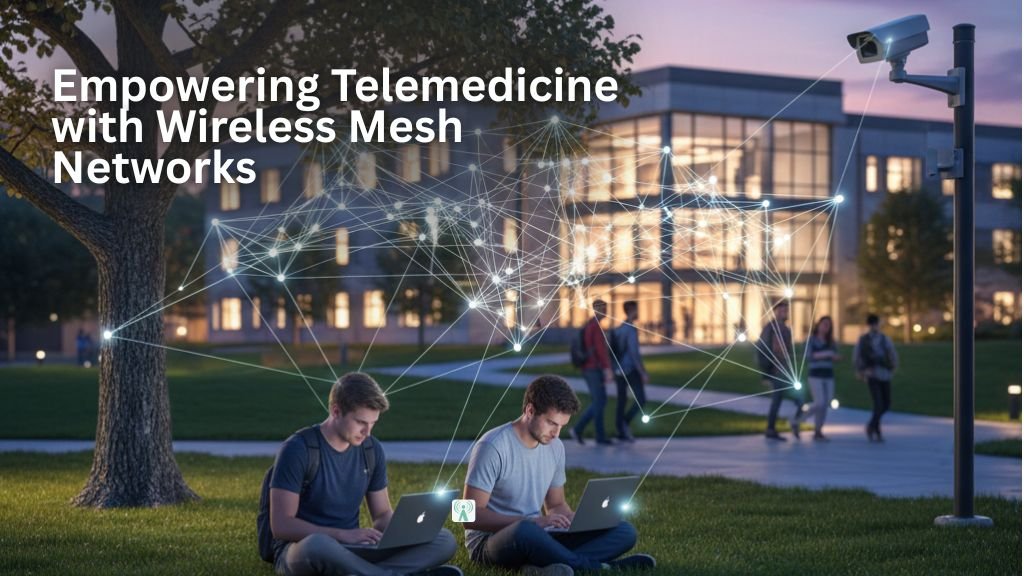In today’s digital era, education depends more on connectivity than ever before. From virtual classrooms and online assessments to campus-wide surveillance and smart learning systems, reliable internet access is no longer optional — it’s essential. However, traditional Wi-Fi networks often struggle to provide seamless coverage in large educational environments.
That’s where Wireless Mesh network solutions for education are reshaping how schools, colleges, and universities stay connected. Designed for flexibility, scalability, and reliability, these networks create an intelligent web of communication across sprawling campuses — without the limitations of conventional wired infrastructure.
Why Schools Need Smarter Network Infrastructure
Modern campuses are bustling digital ecosystems. Students use laptops, tablets, and mobile devices simultaneously, while teachers depend on video conferencing, learning platforms, and cloud-based tools. The challenge? Handling hundreds (or even thousands) of connections at once without dropouts or lag.
Traditional Wi-Fi networks rely on a central router or access point — once that fails or becomes overloaded, the entire network suffers. In contrast, wireless mesh networks allow every node to communicate with others, creating a self-healing and distributed system that automatically reroutes data if one path is blocked.
To explore how this technology supports smart campuses, you can read more about Aeromesh’s Healthcare & Education connectivity solutions.
Best Practices for Deploying Mesh Networks in Schools
1. Plan for Coverage and Scalability
Before deployment, schools should assess the size of their campus, building materials, and areas with high user density. Wireless Mesh network solutions for education can easily scale — simply add new nodes as the campus grows or as device usage increases.
2. Prioritize Security and Access Control
Education networks host sensitive data and must protect student information. Implement encryption, role-based access, and regular security audits to ensure a safe online environment.
3. Optimize Bandwidth for Learning Tools
Video conferencing, online exams, and interactive learning platforms consume significant bandwidth. A well-designed mesh network intelligently distributes traffic, ensuring smooth performance for all connected users.
4. Enable Remote and Hybrid Learning
Mesh connectivity ensures students can join virtual classes from anywhere on campus — classrooms, dorms, or outdoor areas — without signal drops. This flexibility supports hybrid learning models and outdoor study zones.
5. Simplify Maintenance and Monitoring
Modern mesh networks are centrally managed, allowing IT staff to monitor usage, identify issues, and perform updates remotely. This reduces maintenance time and ensures consistent uptime.
Aeromesh’s Wireless Mesh solutions for education are designed with these best practices in mind, helping institutions build smarter, more connected learning environments.
Benefits of Wireless Mesh in Education
-
Uninterrupted Connectivity: Always-on access to digital resources for students and faculty.
-
Cost Efficiency: No extensive cabling or infrastructure overhauls required.
-
Scalable Growth: Easily expands to new buildings or outdoor areas.
-
Improved Collaboration: Supports multimedia learning, group projects, and cloud integration.
-
Enhanced Campus Safety: Integrates security cameras and emergency communication systems on the same network.
The Future of Connected Learning
Education is evolving fast — and connectivity must keep up. As institutions embrace smart classrooms, AI-assisted learning, and IoT-enabled environments, Wireless Mesh network solutions for education will play a vital role in ensuring secure, high-speed, and reliable communication across campuses.
From digital learning to smart campus management, the future of education is wireless — and it starts with mesh technology.
FAQs
1. What makes Wireless Mesh network solutions for education different from traditional Wi-Fi?
Unlike standard Wi-Fi, mesh networks use multiple interconnected nodes that communicate with each other. This creates seamless coverage, even across large campuses, and ensures there’s no single point of failure.
2. How can schools ensure network security with mesh systems?
By using encrypted connections, user authentication, and centralized management tools, schools can protect data privacy and prevent unauthorized access to their mesh network.
3. Are mesh networks cost-effective for educational institutions?
Yes. They reduce cabling costs, simplify maintenance, and can easily expand as the campus grows — making them a future-proof and budget-friendly networking solution.
